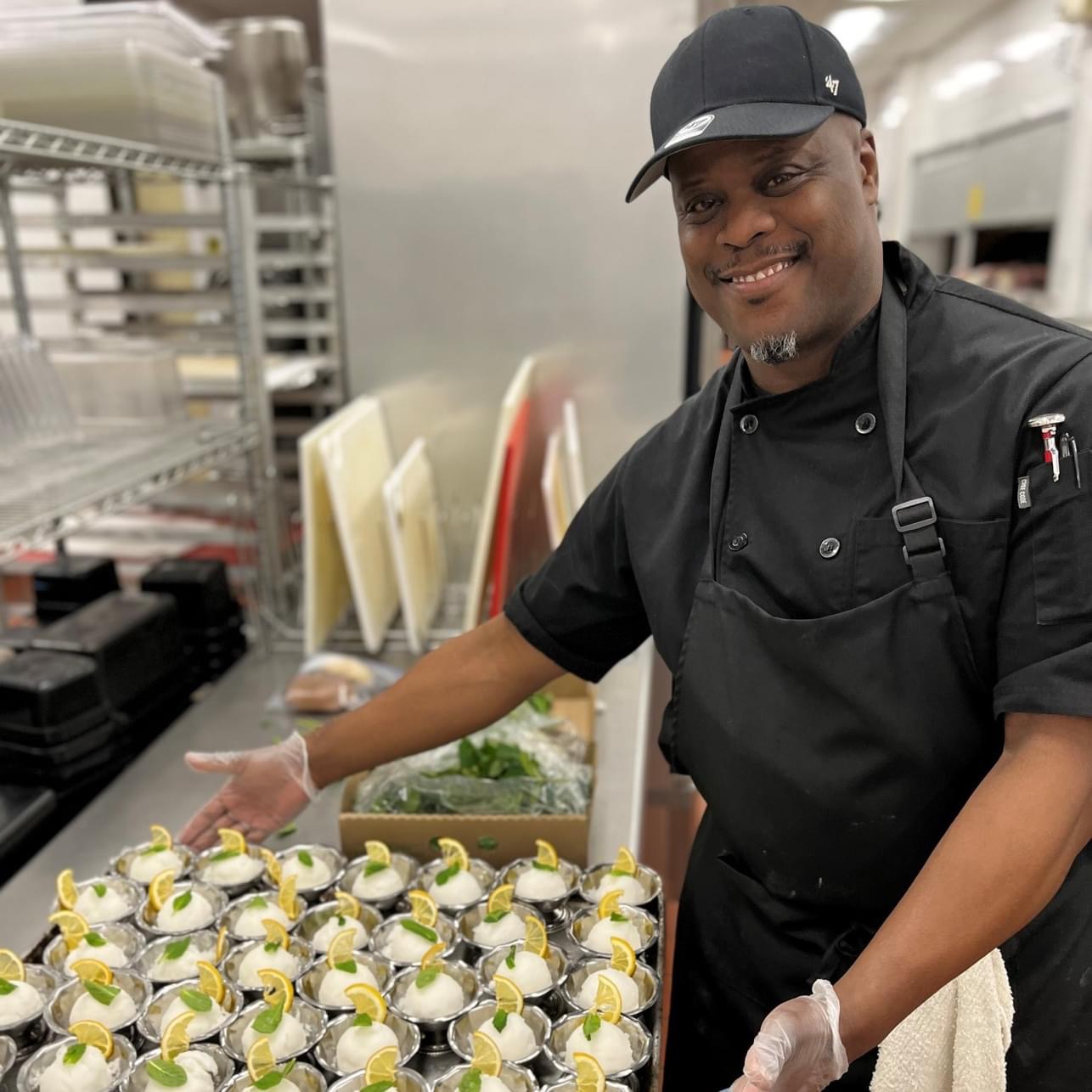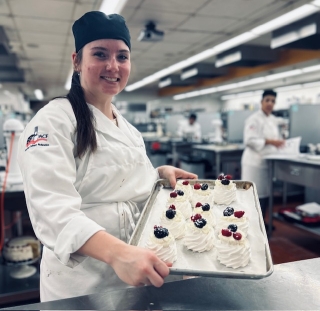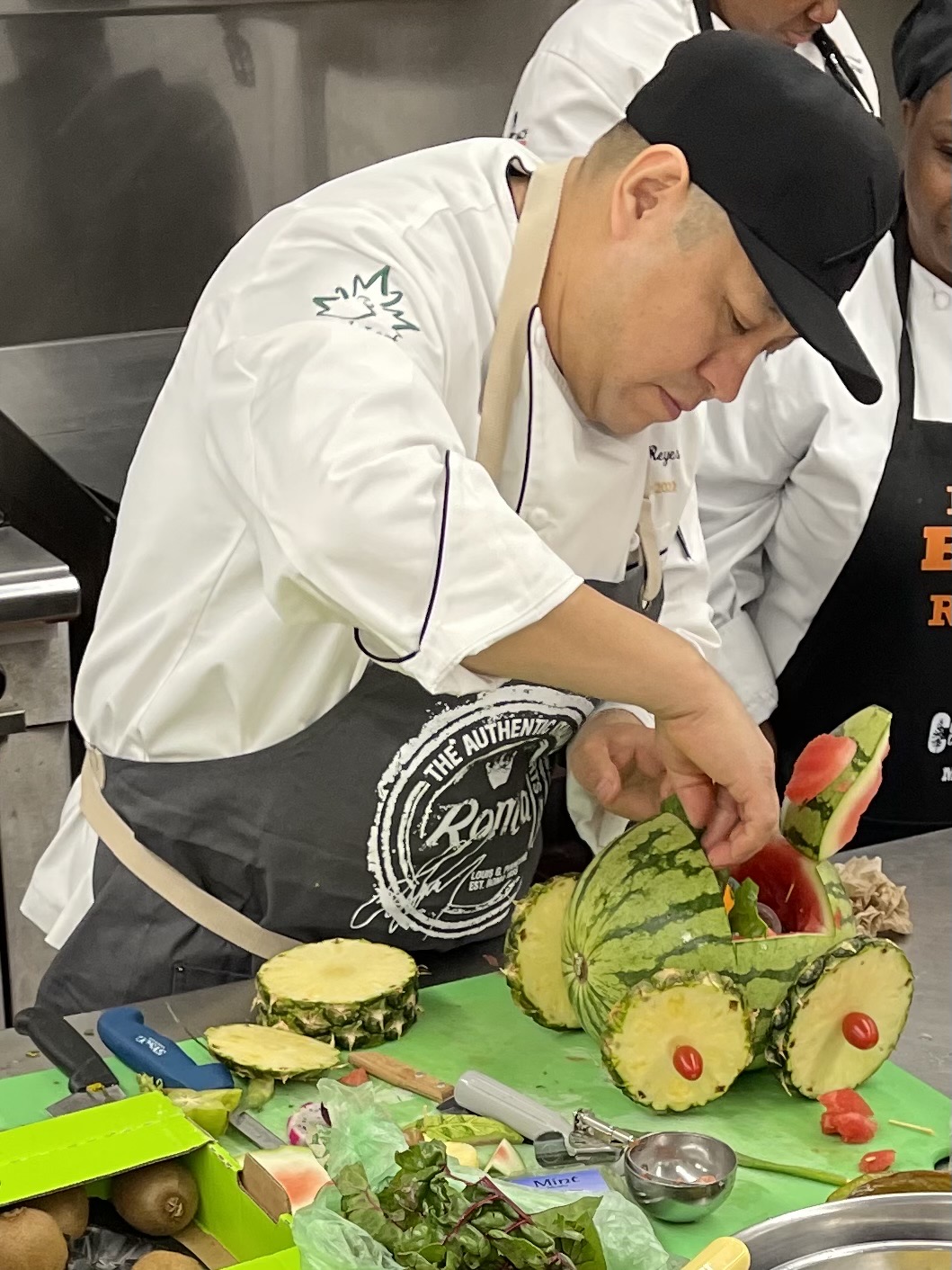
As the industry has continued to evolve and reflecting on the current trends of plant-based cuisine, global/crossover cuisine and the prominence of sustainable sourcing, I again realize my teaching needs to evolve. Integrating modern culinary trends into my coursework is not optional. This new material keeps students engaged and directly connects their training to what is happening in real-industry kitchens today.
I’ve also believe it is important not to get too carried away with what is popular. There are ways of combining modern innovation into traditional culinary techniques. Students need to know the history and traditions of food as well as grasp where it’s trending next.
Introducing a modern culinary industry
I teach an introductory course, Culinary Culture and Industry, during the first semester of culinary school. In this course, I dedicate a morning to a field trip to a local, global market. This store offers products catering to a global customer with items from Asia to Africa.
Students are broken into teams and assigned a scavenger hunt where they begin their own exploration of different ingredients and foods. They come to understand the dynamic blend of cultural and culinary traditions in the Minneapolis community, which are integral to our culinary program.
Students taste the different items, sometimes as soon as on their way back to class. There is such a variety of items to explore, such as fruits, vegetables, items from the deli counter and drinks. I always enjoy it when a student finds an ingredient from their culture and are excited to share its many uses with their classmates. We talk about how the items could be utilized in different recipes. It is a great exercise to broaden students’ culinary understanding, which also has the students learning about their fellow classmates.
Applying current trends in the classroom
In the Culinary Techniques course, I assign students the challenge of modernizing classic dishes. They take a classic dish and use global influences to change and update the application.
I have one student who has a real love for Italian food and dreams about opening open a restaurant or catering business offering Italian food with Asian flavors. I shared with her a traditional Italian dish, Spaghetti all’ Assassina (Spicy Charred Pasta). She took on the updating challenge by substituting tomato paste with red curry paste and tomato sauce and also used Thai chili peppers for heat. Her updated take deepened the flavors and added tremendous complexity. Applying modern trends to classic dishes allows students to lean into potential cuisines they may want to specialize in after graduation.
Another way I introduce modern trends and techniques (plant-forward) is when I teach emulsions by showing the class a classic and modern recipe side-by-side. I demonstrate how to make classic hollandaise sauce and vegan hollandaise sauce using aquafaba. This lesson illustrates for students how to use a classic technique in an innovative way. They are typically excited to see how the aquafaba whips up and how the vegan sauce wonderfully comes together.
 Keeping it real and grounded in techniques
Keeping it real and grounded in techniques
I’ve found that adding projects and speakers to classroom instruction helps students that realize being a chef or culinary professional in today’s industry is about adaptability and execution.
Last semester, I assigned a group project/competition where students generated a brand, priced it out, created a three-course menu and executed the menu in an hour and a half. The groups entered the kitchen at staggered times to begin cooking their courses. They were judged on safety and sanitation, mise en place, appearance of the dishes/plating, texture, food presentation and collaboration.
Many teams went above and beyond by arriving for competition day with matching aprons or matching colors to ensure they conveyed their team spirit. The project brings the students together and builds confidence while fostering imagination and creativity. Instead of creating an ultra-competitive environment, they seemed to be more inspired by each other's creativity after tasting the dishes. They also used the challenge to develop a plan for how to market themselves on social media.
Inviting chefs into my classroom and labs has been a fantastic way of giving students an opportunity to learn from current industry professionals. The guest chefs share their experience as young adults and speak about their culinary journeys. The information shared at these events is immensely important. Students usually have many questions and the information helps shape their ideas of what they would like to do after culinary school.
The chefs I invite are usually local to the Twin Cities. This year, I reached out to one of the final contestants of Hell’s Kitchen that airs on a streaming app. He responded to me and shared that he would love to come visit our program in the Spring. What I learned is that you never know what you can achieve, if you don’t make the request. The worst thing he could have said was no. We are excited about planning that visit and learning about the real challenges of a modern-day culinary competitor and chef.
Tracy Figueroa, culinary instructor at the Hennepin Technical College, Brooklyn Park Campus, received the 2025 Postsecondary Educator of the Year award sponsored by Idaho Potato Commission and CAFÉ. This national honor recognizes an educator’s professional commitment to the educational community and foodservice industry. Click here to read the story.

